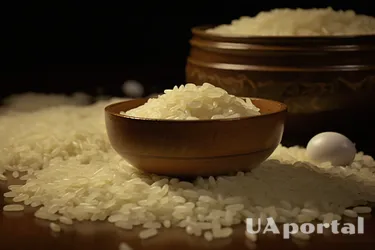How to choose quality rice: pay attention to the smell

Rice is one of the staple foods in many families, but recently, disturbing rumors have been spreading about the presence of plastic rice on the market. UAportal has prepared a detailed description to answer these fears and ensure an informed choice when buying rice.
The source of the fear of plastic rice
The term "plastic rice" first appeared on Chinese social media around 2010, causing widespread panic among consumers. However, it is important to clarify that the incidents involving the so-called "fake rice" were related to fraudulent actions, not the actual replacement of real rice with plastic. In such cases, unscrupulous traders passed off low-quality rice as higher-grade rice.
Also read: Pay attention to the packaging and read the ingredients: how to choose quality ice cream
Explanation of the mistake
One of the rumors that fueled the fear of plastic rice claimed that rice is made from potato starch mixed with industrial plastic. This perception became widespread after a representative of the Chinese restaurant industry stated that eating "plastic rice" is similar to chewing a plastic bag. However, it is very important to separate fact from fiction and to dig deeper into the real explanations.
Identifying real rice
Although the presence of plastic rice remains unexplained, it is still important to be vigilant and make sure that the rice you buy meets the required quality standards. Here are some practical tips to help you identify real rice:
1. Visual inspection:
Carefully inspect the grains. Real rice should have the same shape, size, and color. Beware of grains that appear excessively shiny, transparent, or have an unnatural sheen.
Read also: Why shake eggs before cooking: the result will surprise you
2. Test for texture and odor:
Prepare a small portion of rice as you would cook it. This rice should retain its texture, separating into individual grains. Pay attention to any unusual odors during the cooking process, as plastic rice can give off unpleasant odors.
3. Water test:
Dip a handful of rice into a glass of water. Real rice should sink to the bottom, while artificial rice may float or exhibit unusual behavior, such as melting or bouncing.
4. Cooking results:
When cooked, real rice should have a pleasant aroma and a soft, fluffy texture. If the rice does not smell, feels sticky, or has an unusual taste, it may indicate poor quality or fake grains.
To recap, we have already written how to make natural ice cream.
If you want to get the latest news about the war and events in Ukraine, subscribe to our Telegram channel !
